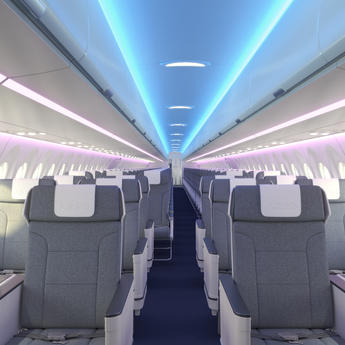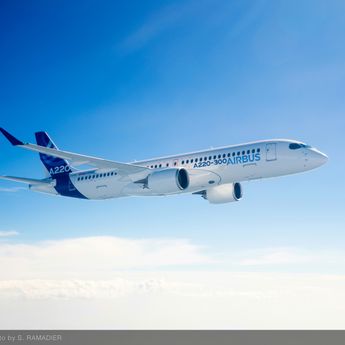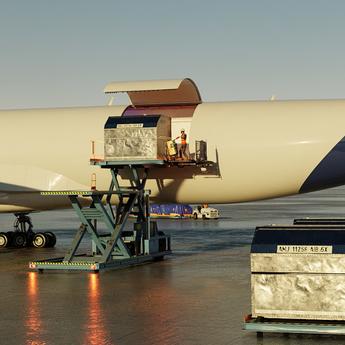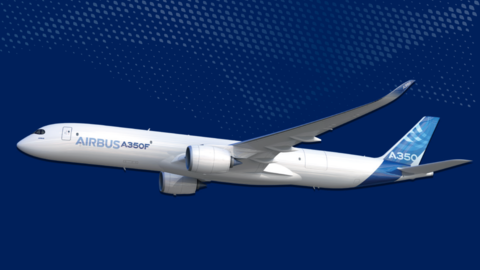In early 2023 the A350F programme continued to steadily enlarge its customer base, standing at time of writing / by end of the first quarter at 35 aircraft from seven operators. In parallel with these latest commercial achievements on the world stage, ‘behind the scenes’ the aircraft’s development has been progressing apace, as the first parts of the world’s newest and most efficient large freighter are taking shape.
This means that the aircraft is coming to reality in just under 1.5 years after the new freighter was officially unveiled to the industry. It is also further testimony that Airbus is progressing well on its commitment to provide airlines and the cargo industry with a unique choice via this all-new technology widebody freighter.
First parts for A350F Centre Wing Box produced at Airbus Atlantic
At the time of writing the first metal-cuts for the A350F had just taken place in Nantes with the machining of the first parts for the Centre Wing Box (CWB). These parts include the “vertical cruciform” – the massive fitting that joins the outer-wing boxes to the CWB.
The teams in Nantes have also produced the first “external foot frames,” which join the CWB to the lateral fuselage shells. Notably, the latter are modified on the A350F to support the loads from the freighter’s main-deck floor.
The CWB and its associated parts are being produced by Airbus Atlantic – Airbus’ new aerostructures company formed in January 2022 by the amalgamation of STELIA Aerospace and the Airbus factories at Nantes and Montoir-de-Bretagne (formerly known as the “Saint-Nazaire” site). While Airbus Atlantic is already producing CWBs for the passenger A350s, the CWB for the A350F features reinforced floor beams to support the heaviest pallets and containers which the A350F will transport – being at the very middle of the aircraft. When complete, the CWB will measure 6.5m long by 5.5m wide by 3.9 metres tall.
CWB design reinforced for freighter operations
Traditionally, the first parts produced for a new aircraft or new variant are for the CWB. On all versions of the A350 this component is largely common and made from carbon fibre. The main CWB design changes for the freighter are the reinforcements required for the increased main deck floor loads linked to its cargo operations. These changes affect the internal CWB composite struts and the metallic (aluminium-lithium) structure on top of the upper composite CWB cover which supports the floor.
Adapted CWB manufacturing and sub-assembly stations in Nantes
In terms of the manufacturing and sub-assembly operations at Nantes, 15 working stations out of the 38 at the factory have been adapted to cater for the new freighter variant’s CWB, allowing production to be intermixed flexibly, ie. together with the CWBs for the A350-900 and -1000 models.
Next steps
Once the large CWB subassembly is ready for delivery in the coming months, it will be loaded on to a special transport jig and depart Nantes by road to reach Airbus Atlantic’s factory at Montoir-de-Bretagne. There it will be installed into the first A350F’s centre fuselage (both the centre and front fuselages of all A350s are assembled and equipped here). The resulting “major-component-assemblies” (MCAs) will subsequently be flown by Beluga from the adjacent Saint-Nazaire-Montoir Airport, directly to Airbus' A350 Final Assembly Line (FAL) in Toulouse.
When it enters service in 2025, the A350F will carry a payload of up to 109 tonnes over a range of 4,700nm. As a new member of the A350 Family, this freighter variant benefits from state-of-the-art technologies, aerodynamics and unrivalled operational flexibility and reliability. At the time of writing, the A350F had received 35 orders, comprising: four aircraft from CMA-CGM; seven aircraft from Air Lease Corporation; seven aircraft from Singapore Airlines; four from Air France; two from Silk Way West Airlines; seven from Etihad Airways; and four from Martinair.
Your media contacts
Contact us
Martin Fendt
Airbus Corporate Communications - Airbus Commercial Aircraft
Latest news
Continue Reading
Airbus Avionics deploys a unique logistics centre dedicated to radomes
Web Story
Services
Airbus Avionics is proud to announce the opening of its brand-new Radome Logistics Hub, strategically located in Tremblay-en-France.
The passenger-favourite A220 gets an Airspace cabin
Web Story
Aircraft

A suite of comprehensive services to keep the A220 flying
Web Story
Aircraft

A350F: what makes the world's largest main-deck cargo door a special one...
Web Story
Aircraft
Airbus confirms Hughes as an additional provider of LEO and GEO services for HBCplus
Web Story
Services

